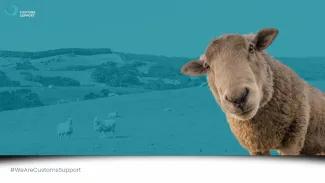To import plant products, live animals or animal products from the European Union (EU) and European Free Trade Association (EFTA) states into Great Britain, you will need to follow the Target Operating Model (TOM) risk categories. The TOM categorises these imports into high risk, medium risk, or low risk, each with its own set of requirements. In this article, we will provide you with an overview of the new import rules and procedures, guiding you on how to determine the TOM risk category for your specific commodities.
Determining TOM Risk Category
To identify the TOM risk category for plant products, animals and animal products, you can refer to three key documents. The "TOM Risk Categories: Summary Tables" provide a summary of how different types of animals and animal products will be categorised. Additionally, the "TOM Risk Categories: Searchable List with Commodity Codes" spreadsheet allows you to search for specific commodities using commodity codes. To identify the TOM risk for EU plant products, please visit the government website to establish the risk category.
It's important to note that the searchable list may not include all necessary information for certain commodities. In such cases, please consult the summary tables for additional guidance on how to categorise your commodities.
Please note depending on your product and the risk category selected, the local Port Health authority will incur a fee. Authorities are currently reviewing their fees and these will be published in due course.
Composite Products
All composite products from the EU and EFTA states will either fall into the low TOM risk category or be exempt from official import controls. Please confirm whether your products are classified as composites and if they are exempt from import controls.
Risk Categories and Import Procedures:
Understanding the TOM Risk Categories is crucial for the successful importation of animals and animal products from the EU to Great Britain. Let's explore the specific requirements for each category:
Low TOM Risk Category
To import goods into Great Britain, it is essential to notify the authorities through IPAFFS before the arrival of the goods. Surprisingly, no health certificate is required for the low-risk category. However, consignments falling under this category must be accompanied by a commercial document from the supplier. An interesting development is that facilitation letters are no longer necessary for low-risk category animal by-products (ABPs) imported from the EU.
Medium TOM Risk Category
The importation process for the medium-risk category involves notifying the authorities via IPAFFS before the goods arrive in Great Britain. A health certificate, issued by the competent authority in the country of origin, is mandatory for this category. It is worth noting that starting from 31 January 2024, products falling under the medium TOM risk category may be subjected to physical import checks, introducing an additional layer of scrutiny.
High TOM Risk Category
In the case of the high-risk category, similar procedures apply. It is imperative to notify the authorities using IPAFFS before the goods arrive in Great Britain. A health certificate, issued by the competent authority in the country of origin, is a requirement for importation. High-risk category consignments already undergo physical import checks, which will continue unchanged.
Importing Medium or High TOM Risk Category Goods without a Health Certificate
If you are importing goods falling under the medium or high TOM risk categories but lack a health certificate, it may be necessary to obtain an import license or authorisation. To clarify any doubts or determine the specific license requirements, do not hesitate to contact our dedicated Animal and Plant Health Agency (APHA) Animal Imports team. Furthermore, for medium-risk animal by-products (ABPs) without a health certificate, a commercial document will be required.
Review of TOM Risk Categories
To account for changing risk levels, TOM risk categories are subject to regular review. In the event of any changes to the TOM risk category of commodities you have imported, you will receive prior notification.
TOM Risk Categories for Non-EU Countries and Plant Products
For information on TOM risk categories related to plants and plant products, please visit the following website: BTOM risk categories for non-EU countries for plant products.
The risk categories for non-EU animal products will come into force from 30th April 2024. These categories can be found at the following government website.
Seeking Assistance
Please liaise with your supplier to establish the risk category. This will indicate if your supplier will need to create a health certificate / phytosanitary certificate or any other additional documentation requirements. Any additional documentation will have to be signed off and completed by your supplier with their local competent authority.
These categories determine the specific requirements and procedures for importing different types of goods. By following the designated risk category and complying with the necessary procedures, you can ensure a seamless importation process and compliance with the regulations.
#WeAreCustomsSupport
If you have any uncertainties or concerns about whether your business is ready for the upcoming changes, we encourage you to seek assistance from our team of experienced consultants. Our experts can provide guidance tailored to your specific situation, helping you understand the requirements, navigate the complexities, and ensure your business is prepared for the new import regulations.
At Customs Support, we understand the challenges that arise with importation, and we are here to support you throughout the process. Our consultants are well-versed in the TOM risk categories and can provide valuable insights and assistance to ensure a smooth and successful importation experience.
Remember, compliance with the TOM risk categories is crucial for a hassle-free importation process. Stay informed, seek assistance when needed, and trust in our expertise to help your business navigate the evolving import regulations with confidence.
*Article Updated: 25th January 2024














